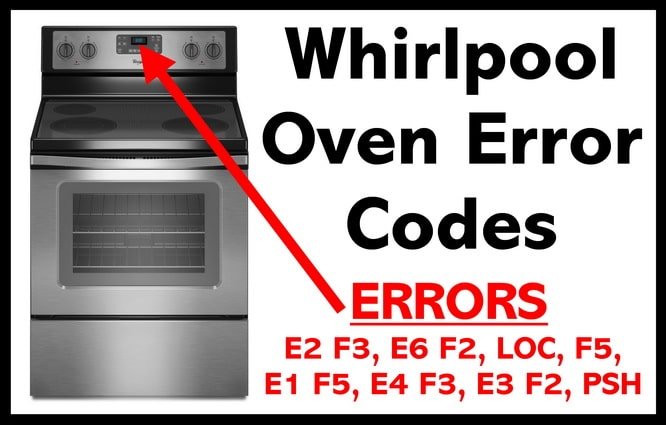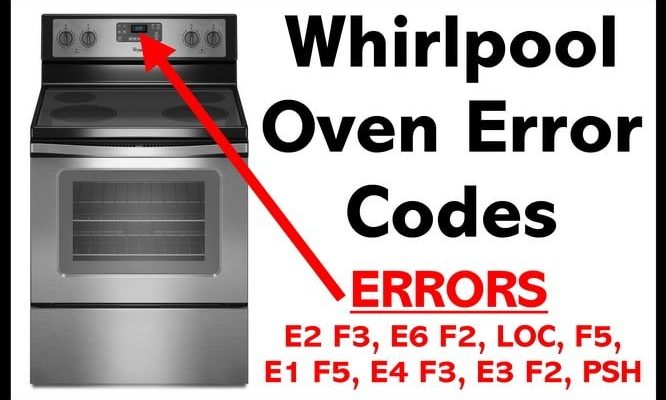
Imagine getting ready to whip up a family dinner, but as you try to start your trusty Whirlpool oven, a mysterious “OE” error code pops up. It’s like your oven speaking a foreign language right when you need it the most. You might be scratching your head, wondering what this could mean. Is something broken? More importantly, is it still safe to use your oven?
Let’s break this down in simple terms. An error code like “OE” is a way for your appliance to communicate that something isn’t working as expected. Think of it as a traffic light signaling stop, go, or caution. Your oven is asking for attention, similar to a car’s “check engine” light. It’s important to understand what your Whirlpool appliance is trying to tell you and whether you should, in fact, continue using it or call in the cavalry — or, in this case, a professional technician.
Understanding Error Code “OE” on Whirlpool Ovens
Okay, so what’s the deal with this “OE” code? In many Whirlpool ovens and ranges, “OE” usually relates to a problem with the oven’s temperature sensor. Picture the temperature sensor as the thermostat that ensures your oven heats accurately. If the sensor is on the fritz, it could mean your oven can’t tell if it’s getting too hot or not heating up enough. This can lead to cooking disasters — just like trying to bake a cake in a temperamental oven might turn out a gooey mess.
Now, why does this happen? There could be a few reasons. Over time, normal wear and tear can cause these sensors to wear out. Sometimes, electrical issues like a short circuit can also be the culprit. Think of it like a light bulb that flickers before it goes out completely — a sign that something needs fixing soon.
So, is it safe to continue using your oven? Generally speaking, if your oven is producing this error, it’s best to exercise caution. The error indicates a malfunction that could affect cooking performance, safety, or both. While your oven may still operate somewhat, ignoring this message could lead to unevenly cooked meals at best, and potentially more severe issues, like overheating, at worst.
Steps to Take When You See Error Code “OE”
Seeing that pesky error code can be intimidating, but don’t worry. Here’s a step-by-step guide to navigating this situation. First, try a simple reset. Much like restarting a frozen computer, this could clear the error if it’s a temporary glitch. Disconnect your oven from power by unplugging it or flipping the circuit breaker off for a minute before reconnecting it. This can sometimes reset the system.
If the code persists, it’s time to dig a bit deeper. Check the temperature sensor for visible signs of damage or disconnection. Be careful here — if you’re not comfortable tinkering with your oven, it might be better to call a professional. The sensor is usually housed inside the oven, and it’s integral to keeping your oven’s temperature in check. Think of it as checking a baby’s bottle’s temperature with your wrist to ensure it’s just right.
Finally, if none of these steps resolve the issue, it might be best to call in a technician. An expert can diagnose the problem accurately and safely, saving you from unnecessary hassle and ensuring your oven is back in tip-top shape. Consider it like going to the doctor when you’re feeling under the weather; sometimes, professional help is the best solution.
Preventative Measures to Avoid Future Errors
So, how can you keep that dreaded “OE” error at bay? Regular maintenance is key. Just like a car benefits from regular oil changes, your oven will last longer and function better with consistent care. Periodically clean the oven’s exterior and interior with recommended products to prevent build-up that might interfere with performance.
Additionally, ensure that the oven’s vents and fans aren’t blocked or clogged with debris. This is akin to keeping your home’s air ducts clear, ensuring optimal airflow. This can help maintain consistent temperature regulation and prevent overheating issues.
Lastly, it’s a good idea to have an appliance technician inspect your oven annually. Much like an annual physical exam for yourself, this can catch minor issues before they turn into major headaches. A little attention now can prevent bigger problems later down the line.
In conclusion, while seeing an error code like “OE” might be concerning, understanding what it means and taking the right steps can help maintain both your appliance’s performance and your peace of mind. Remember, it’s all about safety first, and keeping one step ahead with regular maintenance can make all the difference.
